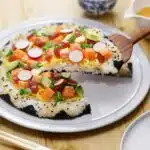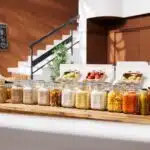- Small blogs often set trends that bigger platforms later adopt, from fermentation projects to gluten-free desserts.
- Their strength lies in trust and voice—readers return not just for recipes, but for context and personality.
In today’s food media, scale often steals the spotlight. The biggest recipe platforms dominate search results, flooding the internet with every dish imaginable. But beneath that noise, smaller niche blogs are quietly shaping how we cook. Their reach may be modest, yet their influence is profound: they preserve traditions, reimagine them for modern kitchens, and often ignite the very trends that mass platforms later amplify.
Why Focus Wins
The appeal of a niche blog lies in its focus. Instead of spreading thin across global cuisines, these writers double down on a specific corner of the food world—whether that means a single cuisine, a dietary philosophy, or even one technique. That clarity builds authority. Readers come not just for recipes, but for trust, context, and the sense of being guided by someone who knows their subject deeply. In an online landscape obsessed with volume, focus feels refreshing.
Beyond Chutney: Indian Flavors with a Western Twist
A good example is Beyond Chutney, a food blog that mixes Indian cooking with Western comfort food. Alongside traditional dishes you’ll find recipes like tikka masala lasagne or butter chicken pizza, showing how familiar flavors can be combined in new ways.
The Bojon Gourmet: Dessert with a New Grammar
At The Bojon Gourmet, Alanna Taylor-Tobin built an entire voice around alternative baking. Her focus on gluten-free flours, seasonal fruit, and meticulous technique turned what might have seemed like dietary compromise into a style of its own. Years before gluten-free baking was mainstream, her blog showed that restriction could spark creativity, producing desserts that feel both elegant and essential.
Phickle: Fermentation Made Friendly
Phickle, run by Amanda Feifer, is proof that even the most niche subject—fermentation—can find a devoted audience. With warmth and clarity, she guides readers through the mysteries of microbes, turning sauerkraut and kombucha into approachable kitchen projects. Long before “gut health” became a buzzword, Phickle was making fermentation less intimidating and more joyful.
Small Labs of Big Ideas
What unites blogs like these is not scale but intent. They feel less like publishing machines and more like workshops: intimate spaces where ideas are tested, refined, and shared with readers who want more than quick answers. Their influence isn’t measured in clicks but in shifts—how kombucha became a household word, how gluten-free baking turned into an art form, how Indian street food found a place on weeknight tables.
The Quiet Future of Food Media
As algorithms favor volume, it’s tempting to think smaller blogs will fade. But their strength lies in what mass platforms can’t replicate: voice, trust, and identity. Niche food blogs function as both archives and incubators—preserving culinary memory while quietly shaping tomorrow’s kitchen trends.
The next big food idea is unlikely to come from a search engine. More likely, it will start in a small corner of the internet, where a cook shares their thoughts, photos, and recipes with a curious audience.
Related posts:
Jacklyn is a San Diego–based food journalist with a background in the confectionery world. Before diving into food reporting, she worked at a startup crafting plant-based, low-sugar sweets designed to make candy a little healthier







